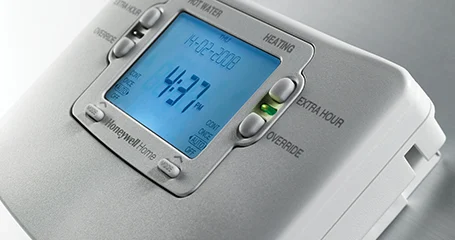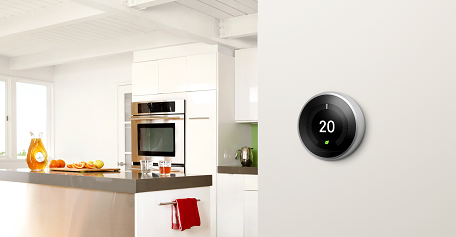The Comprehensive Guide to Buying and Installing Thermostats
Buying the right thermostat for any home or installation is vital. A good thermostat can make all the difference in terms of home comfort, and can save users some serious money on their energy bills.
This guide will explain the three types of thermostat you can buy, and take you through the key considerations to keep in mind when buying and installing a thermostat.
Which Thermostat Should I Buy?
The first thing you should consider when purchasing a thermostat is the heat source. Not all thermostats are compatible with every heat source - thermostats can be designed for use with central heating only, underfloor heating only, or occasionally both. This should be the first thing you check before making a purchase.
With that out of the way, here’s a quick overview of the three types of thermostat you’ll be choosing from.
Manual Thermostats
The cheapest and the most basic thermostat type available is the manual thermostat. They offer temperature control at a fundamental level, and are by far the simplest thermostat to install and set up.
Since manual thermostats cannot be put on a schedule and must be adjusted manually, they are better suited to rooms that have consistent heating requirements day after day.
Programmable Thermostats
A step above manual thermostats, programmable thermostats allow users to set predefined heating schedules and target temperatures at any given time. They may take users a while to set up, however once setup is complete, programmable thermostats can keep home temperatures optimal.
Many choose programmable thermostats thanks to their cost effectiveness and their range of programmable features.

Smart Home Thermostats
The most advanced type of thermostat available, smart thermostats are comparatively new to market. Despite this, they have seen fast-growing adoption rates thanks to their energy saving functionality, with smart thermostats shaving around 8% off heating and cooling bills on average.
Smart thermostats connect to your WiFi, giving them access to a range of energy-saving features - such as knowing the weather forecast, detecting open doors and windows, and learning user temperature preferences. They are typically set up to only heat the rooms currently being used, meaning energy isn’t wasted unnecessarily.
What’s more, smart thermostats can be controlled remotely from any smartphone. Going away on holiday? Simply turn the heating down via the app. Too cold to get up and walk to the thermostat? Just use the app… you get the idea. With a smart thermostat, users can enjoy much finer control of their home temperature.

Thermostat Features
Programmable and smart thermostats come with a varied range of features to choose from, designed to give users greater control over their heating, keep their homes at optimal temperatures, or provide an easy, hassle-free user experience.
- Automated temperature
Some smart thermostats, such as the popular Google Nest Thermostat, ‘learn’ user behaviours and preferences through location geofencing and other smart software. This means the thermostat will become even more efficient with time, automatically keeping the temperature optimal for the user and reducing the temperature whilst they are away.
- Interface
It’s no secret that some thermostats - namely those older programmable thermostats - could be an absolute minefield when it came to programming and operating. Endless buttons, menus, submenus, sub-submenus, and dimly lit screens made programming a heating schedule feel like trying to do theoretical physics - whilst blindfolded.
Thankfully, large backlit displays and intuitive interfaces have made this a thing of the past. Still, it’s important to keep in mind who will be using the thermostat. Elderly and vulnerable people may prefer a thermostat with a simpler, easy-to-use interface with clear screen prompts and large, intuitive controls.
- Filter change reminders
Those with air conditioning or certain HVAC systems may appreciate a thermostat that can notify users when the filters need to be changed.
Important Considerations when Choosing a Thermostat
Consider the Heating System
As mentioned earlier, not every thermostat works with every heating system. Many thermostats, especially smart thermostats, are compatible with most, if not all, types of heating or cooling systems. Yet this doesn’t mean you shouldn’t check with the thermostat manufacturer regardless.
For example, the Nest Thermostat E is compatible with every system except two-stage heat pump systems. The Nest Learning Thermostat on the other hand, is fully compatible with two-stage heat pumps.

The Best Thermostat for Underfloor Heating Systems
The rising popularity of underfloor heating has installers and tradespeople alike wondering what the best thermostat for underfloor heating is. Smart thermostats are generally preferred for creating the most energy-efficient setup possible, and most smart systems are fully compatible with UFH systems.
Generally speaking, the thermostat you choose will depend on usage. Google Nest Thermostats are perfect for having a wide range of smart, energy-saving features, whereas Honeywell Thermostats have advanced multi-zone control to keep every room at the perfect temperature. Drayton, TADO, and Hive also offer a range of compelling features for UFH systems, so it’s worth taking a look at our whole range of smart thermostats to find the perfect one for your needs.
Check your Wiring
Before installing a new thermostat, it’s worth opening up the existing thermostat (if applicable) to check the type of wiring that’s already in place. Standard manual or programmable thermostats can work with just two low-voltage wires, which is common in older heating systems.
Advanced programmable thermostats or smart thermostats require a C-wire (common wire) in order to function. This wire powers the thermostat display, as well as advanced features such as WiFi connectivity.
If there’s no C-wire but you’re looking to install a smart thermostat, it’s not necessarily game over. Third party add-a-wire adaptors can be purchased, and some Honeywell models come with a power extender that can add a C-wire to your system.
If you’re unsure, it may be worth hiring a certified HVAC professional who can safely install a C-wire.
No matter the thermostat you’re after, City Plumbing stocks a varied range of thermostats - from the extremely cost-effective Drayton RTS8, to the slick, feature-packed Worcester Bosch Easycontrol Kit for complete temperature control - and everything in between.
Got any questions? Get in touch with our experts by clicking here.



